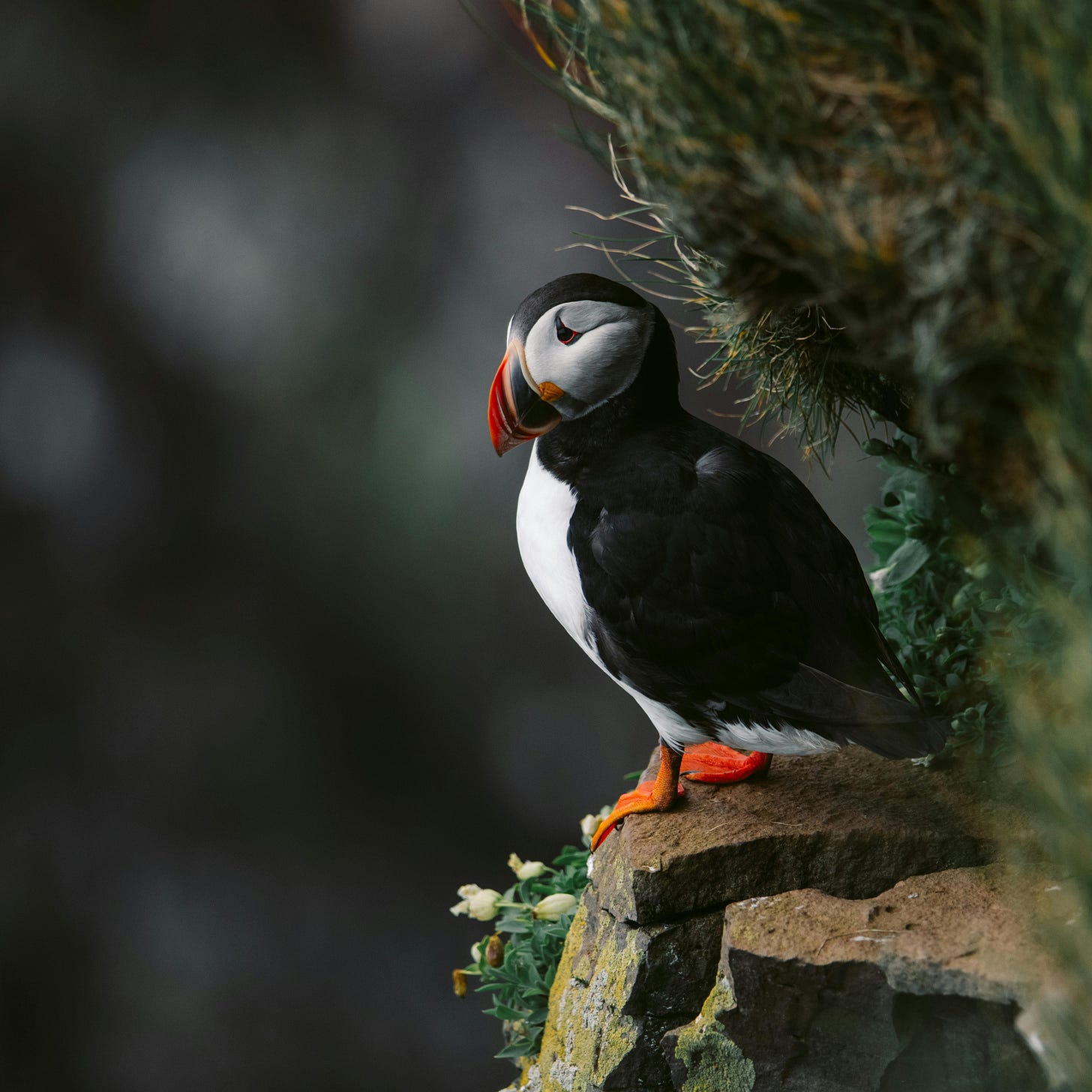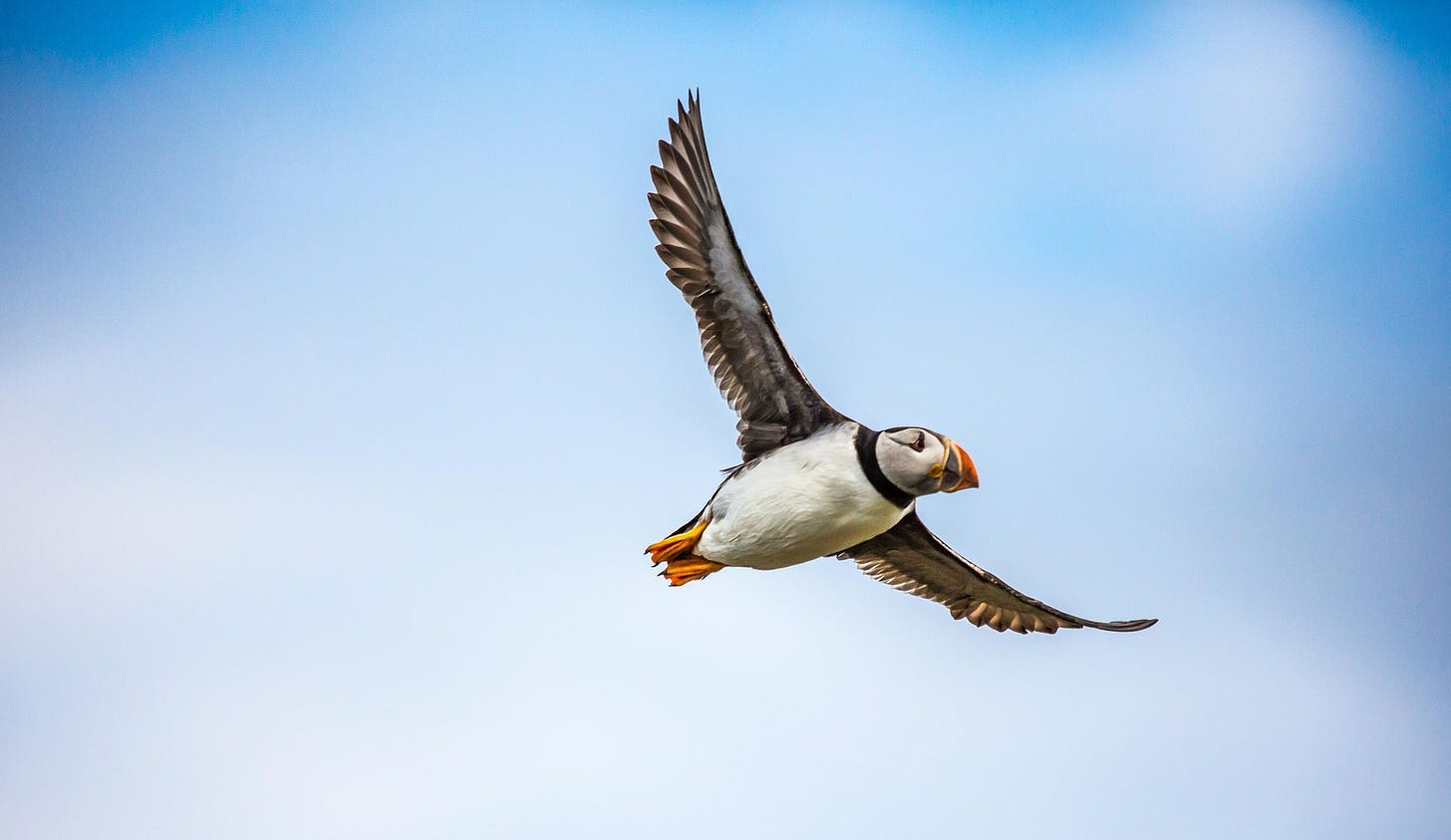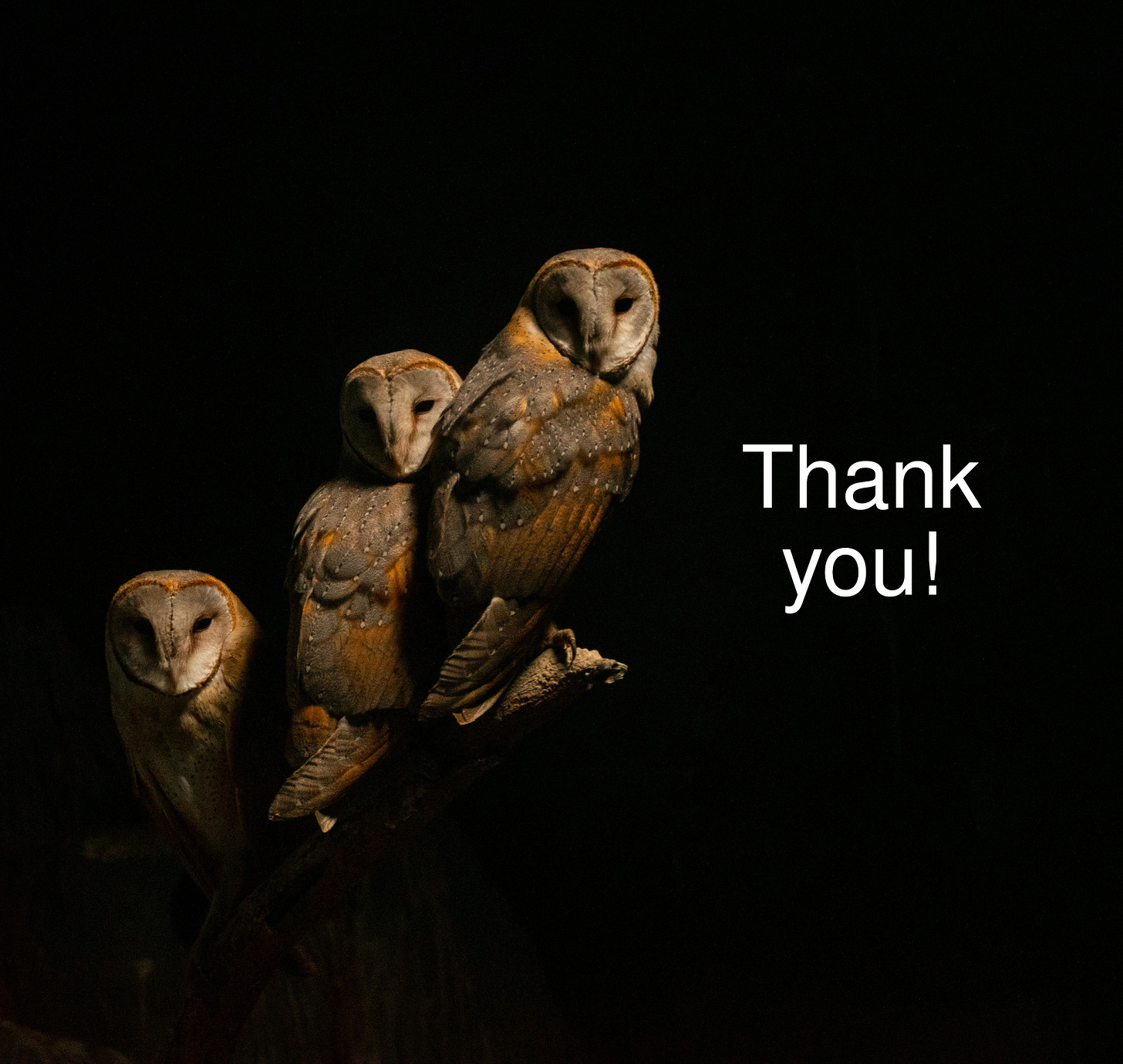Puffin fledglings strand on beaches because of artificial light
Artificial light at night misleads young puffins on their maiden flight.
I live in a country with one of the highest rates of light pollution in Europe. Surpassed only by Malta and the Netherlands, Belgium has the third-brightest night sky on the European continent1. I have never seen the Milky Way or a shooting star here in Belgium, and places where you can experience proper darkness are difficult to find. Artificial light banishes true darkness at night, and that not only spoils my stargazing, it is also a serious problem for birds and many other animals. Every year, millions of birds die due to the consequences of light-pollution worldwide. The light affects their sleeping patterns, their hormone regulation, their communication, their navigation, their reproduction, their foraging behavior, … the list is endless.

One group of birds that is impacted particularly hard is the seabirds—such as the protagonist of today’s science story, the Atlantic puffin (Fratercula arctica). The study2 that I’m presenting to you today took place in Newfoundland, a large island off the eastern coast of Canada. Although moderate compared to Belgium, light pollution is an issue in Newfoundland as well, causing hundreds of puffin fledglings to become stranded on beaches because of the brightly illuminated coasts. A team of Canadian researchers set out to further investigate this issue and concluded that there is only one effective solution to help the birds.
Puffin fledglings (called ‘pufflings’) have to be brave very early in life. After being hidden in their burrow and fed by their parents for the first weeks of their lives, it’s time for them to become independent. At night, alone, they depart from the cliffs of their breeding colony for their maiden flight, heading towards the sea, where they will spend the first five years of their lives before returning for their first breeding season.
Only that far too many pufflings never make it to the sea because they gravitate toward the coastal lights instead.
Being stranded on land can bring an early end to the young birds` life. Pufflings, with wings not yet as strong as those of the adults, cannot easily take off from the ground. Being stranded renders them helpless and unable to reach the open sea and their feeding grounds. They’re in danger of being hit by cars, getting caught by predators, or just dying from starvation.
The team of researchers set out to further investigate the role of coastal artificial light in the stranding of the young puffins. Over eleven nights, they alternately illuminated one of two beaches near the breeding cliffs and counted the birds that arrived on each of those beaches. And indeed—regardless of which of the two beaches was illuminated, far more pufflings ended up on the illuminated site (136 pufflings over the course of all 11 nights) than on the dark one (only two pufflings). This confirms that the pufflings are indeed attracted to the light and their stranding is not caused by simple navigation errors. In case you’re worried: of course, the researchers released all stranded birds back to the sea after each night.
How can we reduce the impact of artificial light on these birds? Previous studies on other species have shown that some kinds of light may be less harmful than others. For example, warmer-colored lights have a less negative impact on Manx shearwaters (Puffinus puffinus) compared to cooler-colored lights. If that were the case for the puffins as well, changing the type of coastal artificial light could help reduce the misguiding effects of illuminated coasts.
Thus, the researchers set up an additional experiment to test whether stranded pufflings had a preference for certain light types. They put individual birds in a box with two exits leading to two chambers, each illuminated with a different type of light (testing different combinations of HPS light, warm white LED, cool white LED, blue LED, and orange LED). However, the pufflings were attracted equally strong by all types of light—no differences were found.
So what options do we have to address this problem? It won’t be enough to simply change the type of light that we illuminate our costs with. At least for the pufflings this won’t make a difference. The best option is simple: keeping the intensity and duration of artificial light at night to the absolute minimum will be the most effective way to ensure that more pufflings reach their proper destination: the open sea.
Remember, it is not only puffins and other seabirds that suffer from a lack of darkness. Any bird living in or near urban environments is affected at least to some degree. All the backyard birds that we find on our feeders, all the songbirds in our parks. The owls, the herons, the finches, the crows, all the beautiful feathered creatures that you, I assume, care about (because you’re reading this newsletter). They all would benefit from a bit more natural darkness at night.
So let’s make a difference and reduce the use of lights at night to the absolute minimum.
If you want to dive further into the topic of stranded pufflings and puffin research, I have two recommendations for you:
Thanks for reading today’s post. I hope you’ll have a wonderful rest of the week!
All the best,










Thank you for spreading the word about this hazard. And welcome to Substack; I'm fairly new on the platform and love connecting to my fellow nature lovers!
Man, we sure make it hard on the beings we share the planet with. I do think about the lights that burn at night. December can get especially bright at night where we live with all the Christmas lights. I wonder how it impacts all the birds migrating at that time of year, the ducks and gulls, etc.